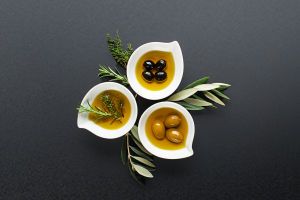Pink, often associated with romance, tenderness, and femininity, harbors a rich and diverse history intertwined with cultural symbolism and psychological significance. Beyond its popular connotations, there are several lesser-known and fascinating facts about this captivating color that shed light on its multifaceted nature and enduring appeal.
This article unveils six intriguing facts about pink, exploring its historical roots, evolutionary significance, and its dynamic role in shaping cultural perceptions and artistic expressions, offering a comprehensive insight into the nuanced identity of this beloved and versatile hue.
Pink's Evolutionary Roots: Contrary to popular belief, the association of pink with femininity is a relatively modern phenomenon.
Throughout history, pink was considered a derivative of red, a color symbolizing power, strength, and vitality.
It wasn't until the 19th century that pink gradually became associated with nurturing and delicate qualities, eventually evolving into a prominent symbol of femininity and compassion in contemporary culture.
This shift in perception highlights the dynamic nature of color symbolism and its ability to adapt and transform over time.
Cultural Variations of Pink: While pink is commonly associated with notions of sweetness and innocence in Western cultures, its significance varies widely across different societies and regions.
In Japan, for instance, pink represents masculinity and strength, serving as a symbolic hue for the iconic cherry blossoms. In some African cultures, pink is associated with good health and success.
Understanding the diverse cultural interpretations of pink underscores the complex interplay between color perception and societal values, showcasing its multifaceted and context-dependent nature.
The Psychology of Pink: Psychologically, pink is known to evoke feelings of warmth, nurturing, and tranquility, making it a popular choice for creating soothing and inviting environments.
Its calming effect on the mind and its ability to alleviate aggressive and hostile feelings have led to its widespread use in various therapeutic and healing spaces.
The subtle and gentle nature of pink's hue contributes to its therapeutic applications, making it a valuable tool for promoting emotional well-being and fostering a sense of harmony and serenity in various settings.
Pink's Symbolism in Art and Fashion: Pink's symbolic significance extends beyond its cultural and psychological associations, manifesting prominently in the realms of art and fashion.
Renowned artists such as Pablo Picasso and Henri Matisse incorporated pink into their works, utilizing its expressive potential to convey themes of love, beauty, and tenderness.
In the world of fashion, pink has been embraced as a symbol of bold self-expression and individuality, challenging traditional gender norms and empowering individuals to embrace their unique identities and personal styles.
Pink in Nature: While often associated with artificial contexts, pink is also prevalent in the natural world, adorning various flora and fauna with its delicate hues.
From the vibrant petals of cherry blossoms and roses to the majestic feathers of flamingos and the intricate scales of tropical fish, pink's presence in nature is a testament to its inherent beauty and aesthetic allure.
Its role in the natural world serves as a reminder of the intricate relationship between color and the diverse expressions of life, underscoring its significance as a universal symbol of vitality and vitality.
The Symbolic Power of Pink Ribbon: The iconic pink ribbon has emerged as a powerful symbol of hope, solidarity, and support for individuals and communities affected by breast cancer.
The global awareness campaign surrounding the pink ribbon has played a pivotal role in raising funds for research, promoting early detection, and advocating for improved access to treatment and care.
Its widespread recognition and symbolic resonance have transformed pink into a beacon of unity and empowerment, inspiring individuals to stand together against a formidable adversary.


